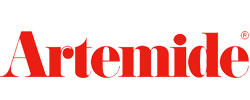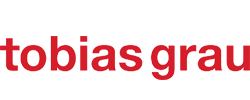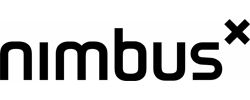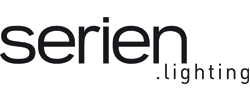Blog
Cash Coverage Ratio Formula Calculator Updated 2023
Posted by : petra | On : 26. September 2024To calculate the cash coverage ratio, you’ll need your company’s earnings before interest and taxes (EBIT) and its current cash balances. Calculating the cash coverage ratio helps accountants understand a company’s ability to pay off debt with its available cash. It’s not just about avoiding default risk, but also showing that liquidity and solvency are under control. With this ratio, lenders and investors can feel confident in a company’s ability to honor debt service and maintain financial stability. Coverage ratios gauge a company’s financial resilience by comparing earnings or cash flow to fixed financial obligations. The numerator, typically Earnings Before Interest and Taxes (EBIT), reflects the company’s operational profitability before accounting for financial obligations.
Creditors and investors use the cash coverage ratio to gauge a company’s ability to meet its debt obligations. A strong ratio suggests financial stability and a lower risk of default, which can improve the chances of securing loans or attracting investment. The cash coverage ratio is calculated by adding cash and cash equivalents and dividing by the total current liabilities of a company.
Get Notify to Latest Terms
The denominator consists of fixed financial obligations, such as interest payments, principal repayments, or total debt service requirements. The choice of denominator depends on the type of coverage ratio being calculated. For instance, the debt service coverage ratio includes both interest and principal payments, providing a comprehensive view of debt obligations. Financial analysis is incomplete without understanding how companies handle their debt obligations.
How to Calculate Cash Coverage Ratio
Adjust earnings figures as needed to exclude non-recurring items or extraordinary events that could distort the results. This ensures the ratio provides a realistic assessment of the company’s ability to meet financial obligations. The cash coverage ratio can be even more useful if tracked over time to determine trends. It is frequently used by lending institutions to determine whether a business is financially able to take on more debt. For companies that have interest expenses that need to be paid, the cash coverage ratio is used to determine whether the company has sufficient income to cover them.
Assessing a Company’s Ability to Cover Interest Expenses
Once you’ve calculated EBIT, you‘ll need to add back any depreciation or amortization expenses. For example, if your EBIT number is $60,000, and your depreciation expense is $4,000, the total you’ll use to calculate your cash coverage ratio is $64,000. Understanding the Cash Coverage Ratio is crucial because it helps stakeholders assess whether a company generates enough cash from its operations to meet its interest obligations.
- With this ratio, lenders and investors can feel confident in a company’s ability to honor debt service and maintain financial stability.
- Once you’ve calculated EBIT, you‘ll need to add back any depreciation or amortization expenses.
- Typically, you may combine cash and equivalents on your balance sheet or list them separately.
- Some sources simplify this one and ignore the Rent/Lease Payments so that it’s more of a Debt Service ratio, but this defeats the point of the FCCR.
- Several coverage ratios look at different aspects of a company’s resources and obligations.
What is the difference between cash coverage ratio vs. cash debt coverage ratio vs. cash flow to debt ratio?
A Cash Coverage Ratio above 1 is generally considered healthy, indicating that a company has sufficient earnings to cover its interest expenses. Current liabilities are always shown separately from long-term liabilities on the face of the balance sheet. Similarly, the interest expense is also available in the income statement. Some of these figures may also be available in the notes to the financial statements.
For any IFRS-based company, EBITDA already excludes the full lease expense, so you do not add it back in the “available cash flow” numerator of the FCCR. The Cash Coverage Ratio shines a light on how well a company can handle its debts. This key number helps to check if there’s enough cash flow for debt repayment. Think of it as a safety net; the higher the ratio, the bigger the net. The higher value of the cash coverage ratio, the more cash available for the interest expenses.
Next comes figuring out the company’s short-term debts or total current liabilities. These are what the business owes and must pay within a year—things like bills to suppliers (accounts payable) and any loans due soon. A ratio lower than 1 suggests that the business subject to change does not have enough cash or cash equivalents to cover its current liabilities. This could signal potential liquidity problems and may require the business to improve its cash flow management or seek additional financing. Ideally, investors look for companies with a cash coverage ratio of two or higher. This suggests that the business can easily afford to pay off its current liabilities without borrowing money from outside sources or selling off its assets.
Operating Cash Flow to Debt Ratio
Usually, coverage ratios consider two primary financial obligations. When the cash coverage ratio value is more than 1 means the company has the cash available more than the interest expenses. Conversely, when the cash coverage ratio number is less than 1 means the company’s total cash can not cover its interest expenses.
Coverage ratios are used as a method to measure the ability of a company to pay its current financial obligations. Along with the cash coverage ratio, there are a variety of other coverage ratios that can be used. The cash ratio shows how well a company can pay off its current liabilities with only cash and cash equivalents. This ratio shows cash and equivalents as a percentage of current liabilities. A coverage ratio is a financial ratio used to measure a company’s ability to repay financial obligations.
These ratios help assess the risk of lending or investing in a business by evaluating how comfortably a company can cover debt-related expenses. This ratio is significant because it helps assess a company’s financial health and risk level. A high ratio implies better ability to meet debt obligations, reducing the likelihood of default. Investors, creditors, and analysts use the cash coverage ratio to make informed decisions about a company’s creditworthiness and investment attractiveness.
- The cash coverage ratio is more specialized and uses net income rather than cash assets.
- It’s like having enough gas in your car for a long trip – companies need enough cash flow to go the distance with their debt payments.
- Clearly, you’ll have to take action to fix this or throw in the towel.
- Therefore, the restaurant owner visits its local bank seeking a $500,000 loan.
Assets America was incredibly helpful and professional in assisting us in purchasing our property. It was great to have such knowledgeable and super-experienced, licensed pros in our corner, pros upon which we could fully rely. They helped and successfully guided us to beat out 9 other competing offers! They were excellent at communicating with us at all times and they were extremely responsive. Having them on our team meant that we could always receive truthful, timely and accurate answers to our questions.
Conversely, this is different from the CCR, which depends only on the balance sheet. Typically, you may combine cash and equivalents on your balance sheet or list them separately. Invariably, your balance sheet always shows current liabilities separately from long-term liabilities. The FCCR should always be above 1.0x, indicating the company has enough cash flow to pay for its fixed charges, and the healthiest companies should see ratios of 2.0x, 3.0x, or even 4.0x or higher.
This ratio also goes under the name of the cash debt coverage ratio. You’ll also find that a company’s balance sheet generally reports its current or short-term liabilities separately from its long-term liabilities, making them easy to identify. In either case, the cash equivalents will include any short-term investments that can be converted into cash within three months or less. You can find the numbers for EBIT on your income statement, and your cash balances will be listed in your balance sheet. As with any ratio, it’s important to view the results cautiously, understanding that an accounting ratio often represents just a single area of your business.














